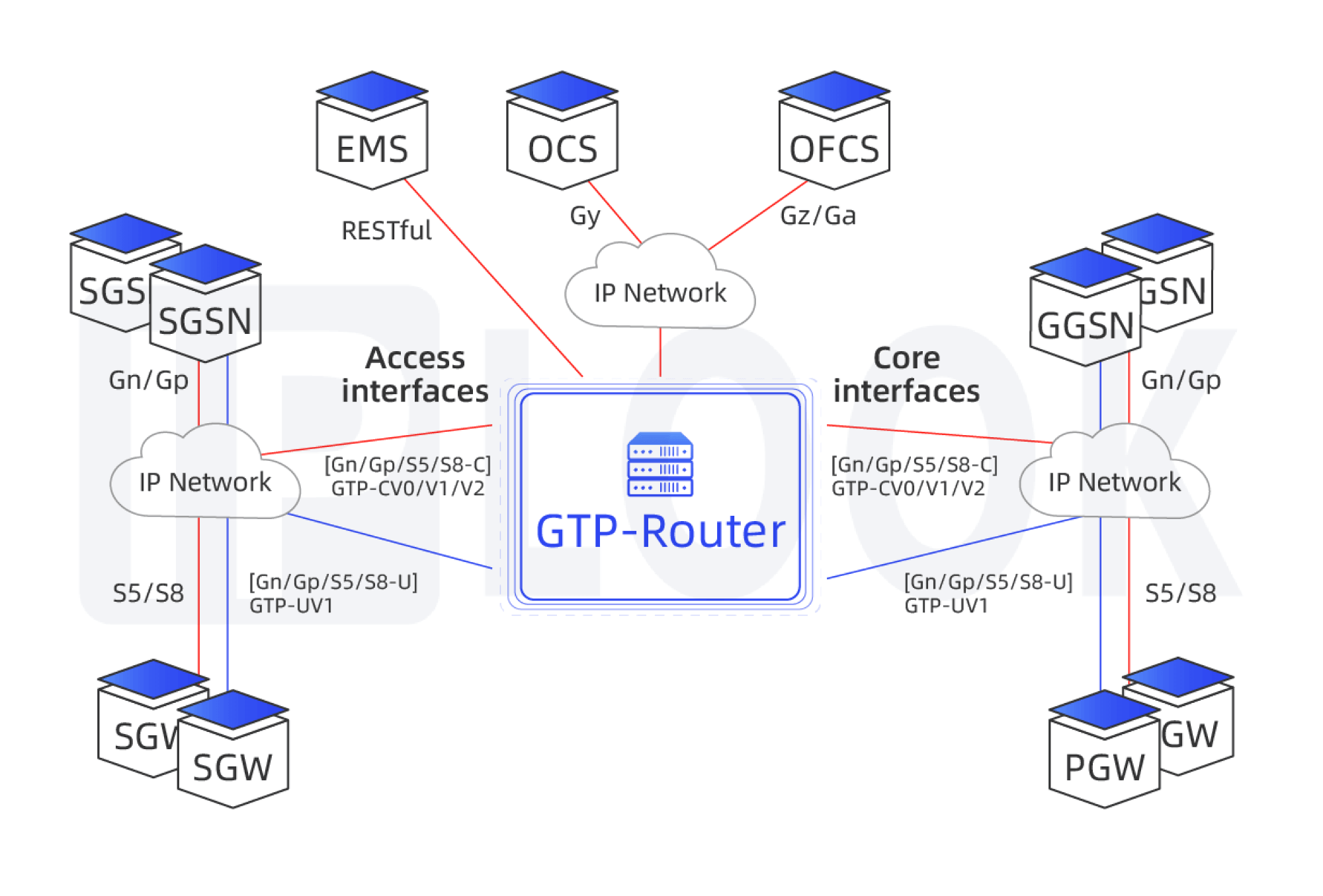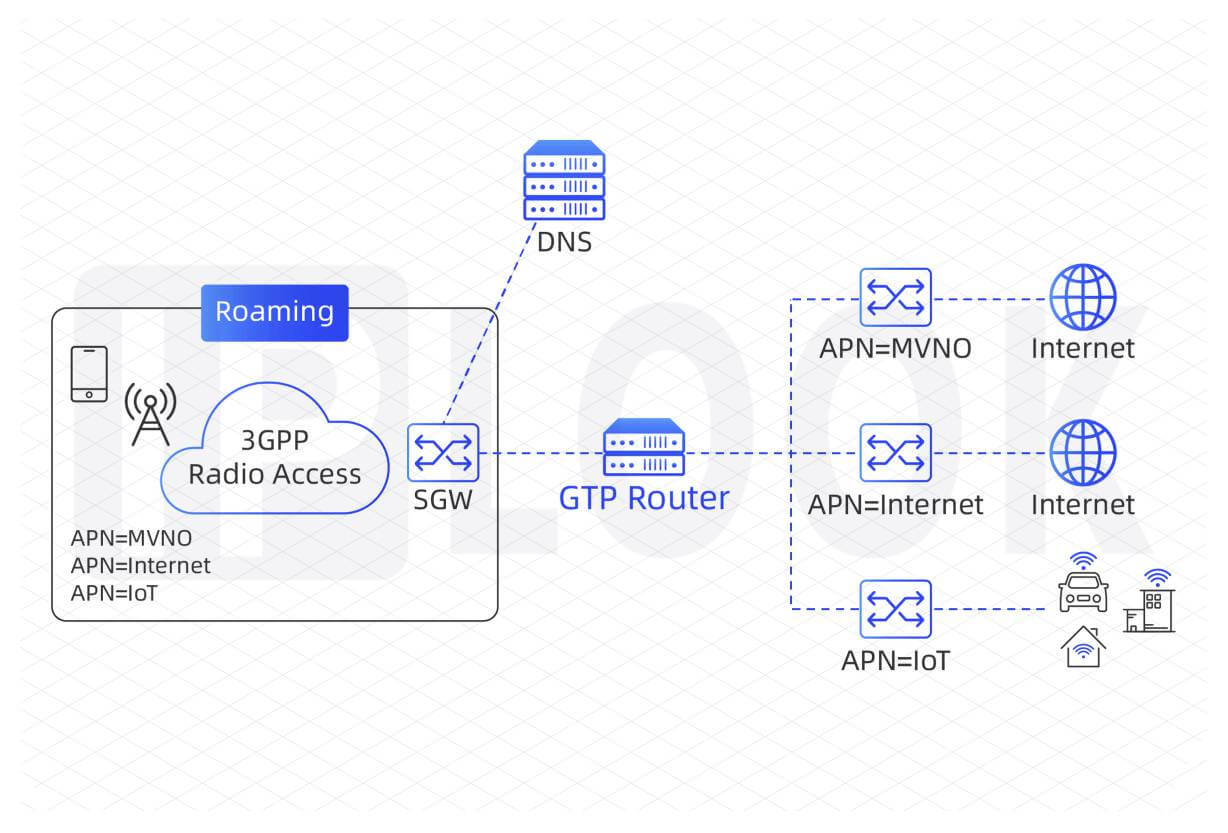






IPLOOK GTP solution acts as a GTP proxy meaning that for GTPv1 and GTPv2 control-plane traffic. IPLOOK's solution terminates the GTP tunnel and analyses the IMSI. In case the IMSI from the other MNO is recognized by checking a configuration table holding IMSI sub-ranges then IPLOOK opens a new GTP tunnel and sends the request to the known Gateway GPRS Support Node/Packet Gateway (GGSN/PGW) of the real Home MNO and potentially also manipulates the APN name inside the request so it can access the known APN on the own Home MNO's GGSN/PGW. The configuration table is easily configurable by the VPLMN engineers.


